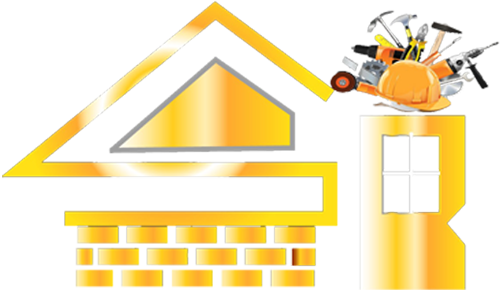What are the most affordable roofing materials available in Brooklyn, NYC?
That’s a question almost every homeowner here asks when the roof starts to show cracks or leaks. Roofs in this city can cost more than the national average due to permits, labor, and building access, so finding an affordable option is crucial. For pitched roofs, asphalt shingles are usually the lowest-priced choice. For flat roofs, which are common on Brooklyn brownstones and townhouses, rubber membranes like EPDM or TPO often bring the best balance of low upfront cost and durability.
In this detailed post, we’ll go beyond just mentioning materials. You’ll get a quick view of key facts, a close look at the top five most affordable roofing materials, and a clear guide to which option actually suits Brooklyn homes. We’ll also explore hidden costs, the risks of going too cheap, and how to maximize value within your budget. So, stay connected with us!
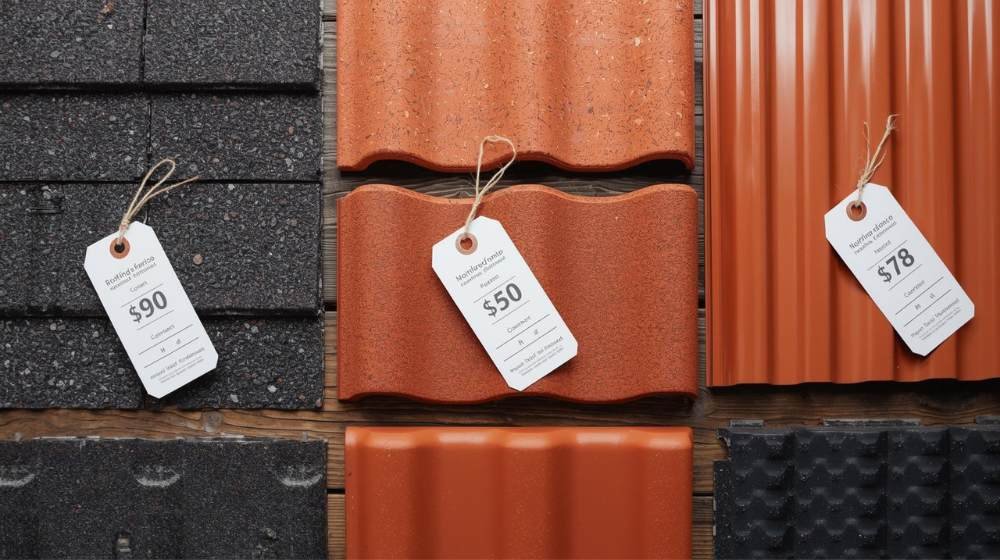
Overview of Key Information: Top 5 Cheapest Roofing Materials in Brooklyn, NYC
| Material | Price Range (Installed) | Typical Lifespan | Key Features | Benefits | Drawbacks | Energy Efficiency |
| Asphalt Shingles | $5–$9 per sq ft | 20–30 yrs | Fiberglass base, UV granules, many colors, best on slopes. | Low cost, many installers, easy repairs, fire-rated, common look. | Shorter life, wind damage, weather stress, algae stains. | Moderate – dark absorbs heat, light reflects some sun. |
| Roll Roofing | $2–$5.50 per sq ft | 5–10 yrs | Mineral surface, narrow seams, light rolls, nailed or glued. | Very cheap, quick install, few tools, temp cover, easy patch. | Short life, poor look, weak seams, not for homes. | Low – thin, little insulation or reflection. |
| EPDM / TPO | EPDM: $5–$13TPO: $5.50–$14 | 15–30 yrs | Large sheets, welded seams, works with insulation, flat-suited. | Good value, fewer seams, TPO reflects heat, EPDM flexible, widely used. | Skilled install, seam risk, punctures, and ponding issues. | High – TPO cools in summer, EPDM warms in winter. |
| Corrugated Metal | $4–$30 per sq ft (avg $11) | 30–45 yrs | Ribbed panels, overlap edges, coated steel/aluminum. | Long life, fire safe, sheds water fast, light, recyclable. | Noisy, can warp, edge rust, not historic-friendly. | Good – reflective coatings cut heat, insulation needed. |
| Polycarbonate Panels | $5–$28 per sq ft (mat. $2–$6) | 8–25 yrs | Clear or multi-wall sheets, UV treated, light weight. | Daylight in, light, easy cut, hail resistant, simple frames. | Scratches, low insulation, yellow, code limits. | Moderate – lets light in, weak insulation unless multi-wall. |
The Top 5 Cheapest Roofing Materials in Brooklyn, NYC
Most homeowners in Brooklyn look for affordable initial costs without giving up basic protection. Asphalt shingles are usually the cheapest option for pitched roofs. Single-ply membranes, such as EPDM or TPO, are often more cost-effective than other alternatives on flat brownstone roofs. For sheds and minor additions, roll roofing is the cheapest option. For niche, budget-conscious projects, entry-level corrugated metal or simple polycarbonate panels are suitable options.
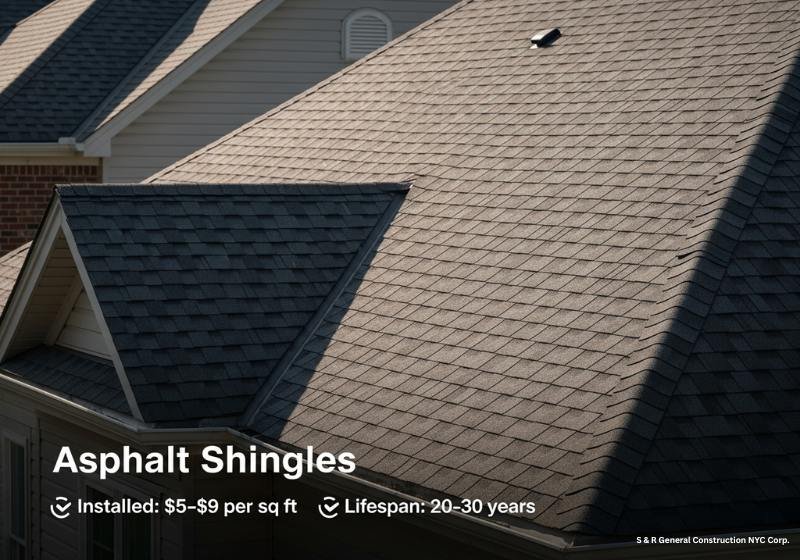
Asphalt Shingles
The classic budget roof for pitched homes in Brooklyn. Simple to source and fast to install, with many colors that blend with neighborhood blocks.
Features
- Fiberglass or organic mat base
- Granulated surface for UV resistance
- Wide color and style range
- Works best on pitched roofs
Benefits
- Lowest installed price for pitched roofs in Brooklyn
- Large installer pool across NYC
- Easy spot repairs
- Decent fire rating options
- Familiar look buyers expect
Drawbacks
- Shorter life than metal or tile
- Wind uplift can loosen tabs.
- Heat and freeze-thaw stress the surface.
- Algae streaks without a proper shingle type
Price range (Brooklyn/NYC)
- Installed: about $5–$9 per sq ft.
- Typical service life: about 20–30 years with good ventilation and care.
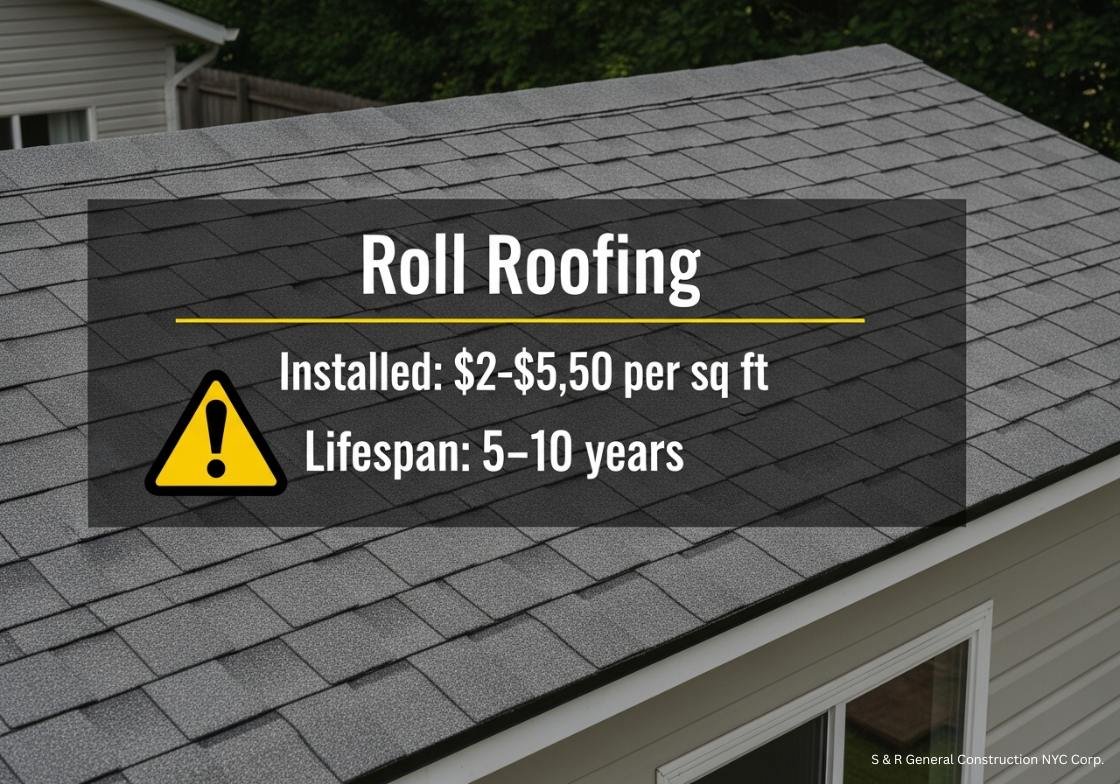
Roll Roofing
Asphalt material that is very cheap and comes in rolls. Works well on small, low-slope surfaces, such as sheds or minor repairs.
Features
- Mineral-surfaced rolls
- Narrow seams along the length
- Lightweight per roll
- Basic adhesives or nails for attachment
Benefits
- Lowest upfront cost for a roof surface
- Fast installation in simple areas
- Minimal tools
- Good for temporary coverage
- Easy patching for small tears
Drawbacks
- Short lifespan
- Limited colors and curb appeal
- Not ideal for occupied living spaces
- Vulnerable at seams and penetrations
Price range
- Installed: about $2.00–$5.50 per sq ft.
- Typical service life: about 5–10 years with basic care.
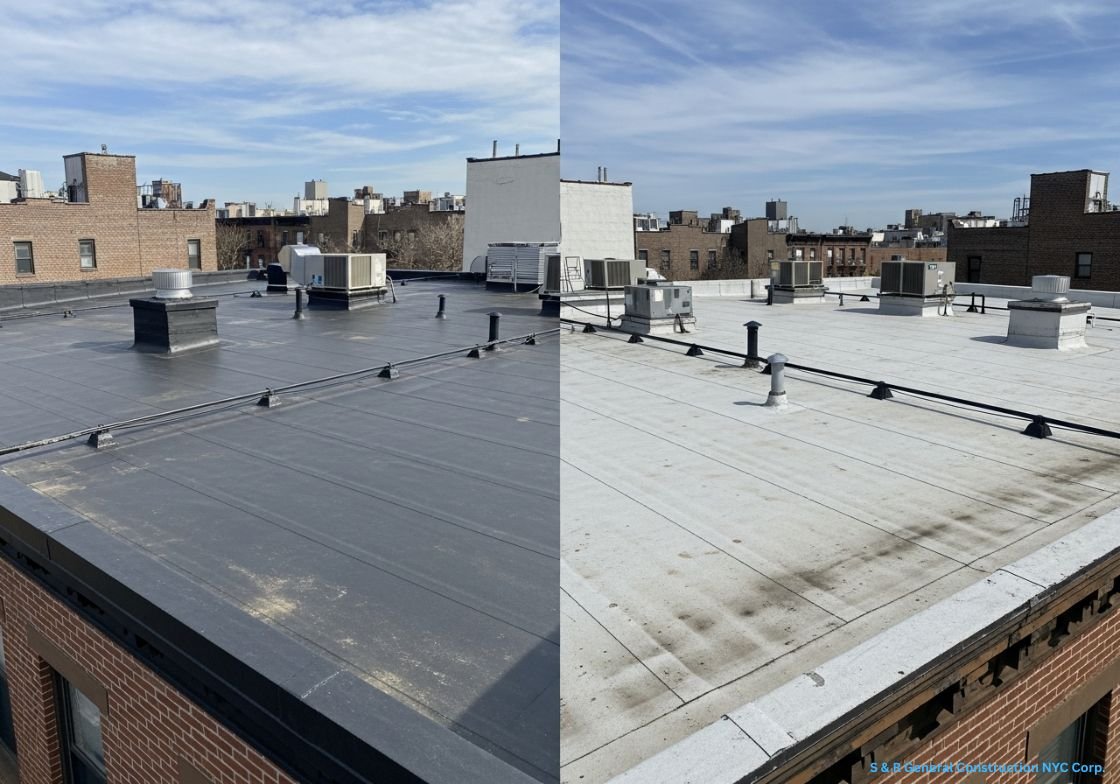
EPDM/TPO Roofing
Popular single-ply membranes for Brooklyn’s flat and low-slope roofs. EPDM is black rubber; TPO is light-colored and reflects heat.
Features
- Large sheets with heat-welded or taped seams
- Compatible with rooftop insulation
- Flashings for drains and parapets
- Suited to flat townhouse decks
Benefits
- Strong value on flat roofs
- Fewer seams than built-up systems
- TPO reflectivity helps with summer heat
- EPDM handles cold and movement well.
- Widely available in NYC
Drawbacks
- Seams need skilled work.
- Punctures from foot traffic without walk pads
- Drainage issues shorten life if ponding persists.
- Light colors tend to show dirt more easily without regular washing.
Price range
- EPDM installed: roughly $4–$12 per sq ft nationally; about $5–$13 is common in NYC jobs.
- TPO installed: approximately $5.50–$14.00 per square foot, depending on thickness and insulation.
- NYC flat-roof totals often fall about $3.50–$12 per sq ft, depending on scope.
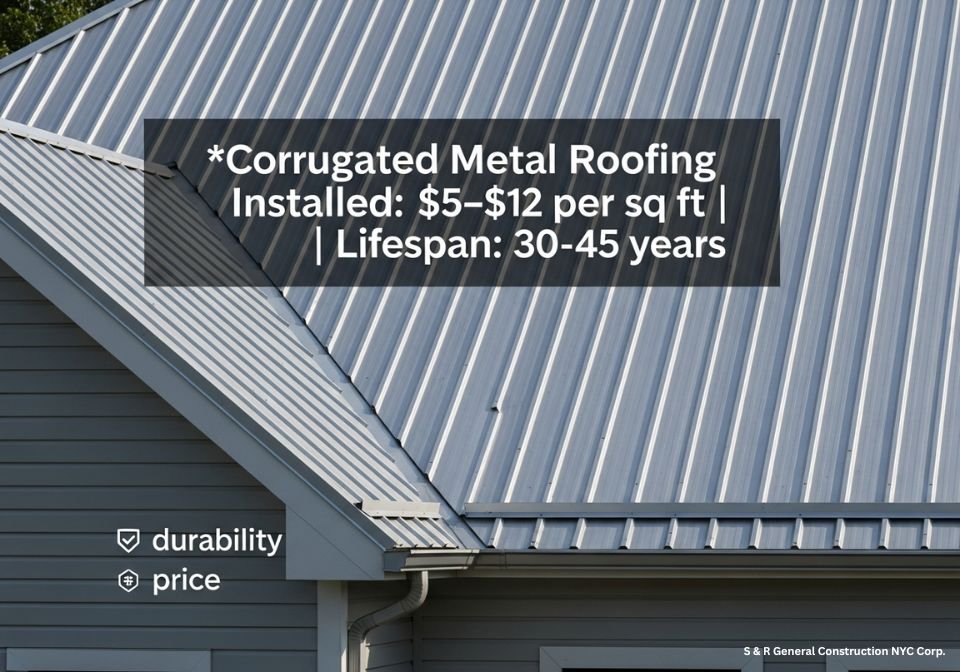
Corrugated metal sheets
Entry-level metal panels that beat shingles on longevity, yet can stay budget-friendly at the thin-gauge end. Better on pitched roofs than on flat ones.
Features
- Ribbed steel or aluminum panels
- Overlapping edges for water shedding.
- Compatible with foam closures and underlayment
- Takes factory coatings for corrosion control
Benefits
- Longer life than basic shingles
- Good fire resistance
- Fast watershedin storms
- Recyclable material options
- Lean structure weight
Drawbacks
- Higher noise during heavy rain without sound-deadening
- Oil-canning on thin panels
- Edge corrosion risk near salt or pollutants without proper coating
- Aesthetic limits on historic blocks
Price range (New York, NY area)
- Installed: about $4–$30 per sq ft; many projects average near $11 per sq ft.
- Typical lifespan: roughly 30–45 years with proper maintenance.
Polycarbonate roofing panels
Clear or translucent plastic panels for patios, pergolas, sunrooms, and light-duty covers. Not a common choice for full-house roofs in Brooklyn, yet useful for add-ons that need daylight.
Features
- Single-wall or multi-wall sheets
- High impact resistance
- UV-treated faces
- Light diffusion options
Benefits
- Low panel weight
- Daylight without glass
- Simple cuts and fasteners
- Good hail impact resistance for the weight
- Works well over small frames
Drawbacks
- Lower insulation than solid roofs unless multi-wall
- Scratches more easily than glass
- Can yellow without quality UV layers
- Building-code checks needed in NYC before use on dwellings
Price range
- Materials price: about $2–$6 per sq ft for panels;
Installed total: generally $5–$28 per square foot, depending on the type of framing and labor. - Typical lifespan: 8–15 years for corrugated clear panels, 10–20 years for multi-wall panels, and up to 25 years for higher-grade, UV-stabilized products; many products carry a 10-year warranty.
Which roofing material is right for Brooklyn, NYC?
Asphalt shingles are the most common budget-friendly option for pitched roofs in Brooklyn, and many local price guides list them as the most frequently installed choice.
Most brownstones and many townhouses use flat or low-slope roofs, so single-ply membranes matter more in those blocks.
For flat roofs, EPDM or TPO often gives the best “cheap but reliable” balance when you want a low total cost.
Roll roofing is suitable for sheds or very short-term fixes, but not for a long-term home roof.
Corrugated metal can work well on simple pitched roofs, and polycarbonate panels are suitable for canopies or patios rather than full house roofs.
Why “Cheapest” Isn’t Always Your Best Friend
I went to a friend’s house in Carroll Gardens one afternoon. The roof looked old and soft around the edges. I thought it was at least 20 years old. He replied that he had changed it two years ago. I was surprised. He said he chose the cheapest option he could find and didn’t take proper care because he was busy. When winter storms hit, water sat, seams peeled, and little leaks became stained ceilings. We discussed the potential cost of removing the deck, drying it off, and starting over. That amount was much bigger than the extra money he would have spent on a better system at first. That’s why the best option isn’t always the best one.
Best Value for Different Budgets (Brooklyn, NYC)
Low budget
- Pitched roofs: Basic asphalt shingles keep costs low and are easily sourced in NYC. Expect to pay roughly $5–$9 per square foot installed.
- Flat roofs: EPDM, at the lower end of its range, can hit tight budgets, with many guides showing costs of $4–$12 per square foot by system and insulation.
- Use with care: roll roofing is suitable for sheds or temporary covers, but not for a long service life on a main home.
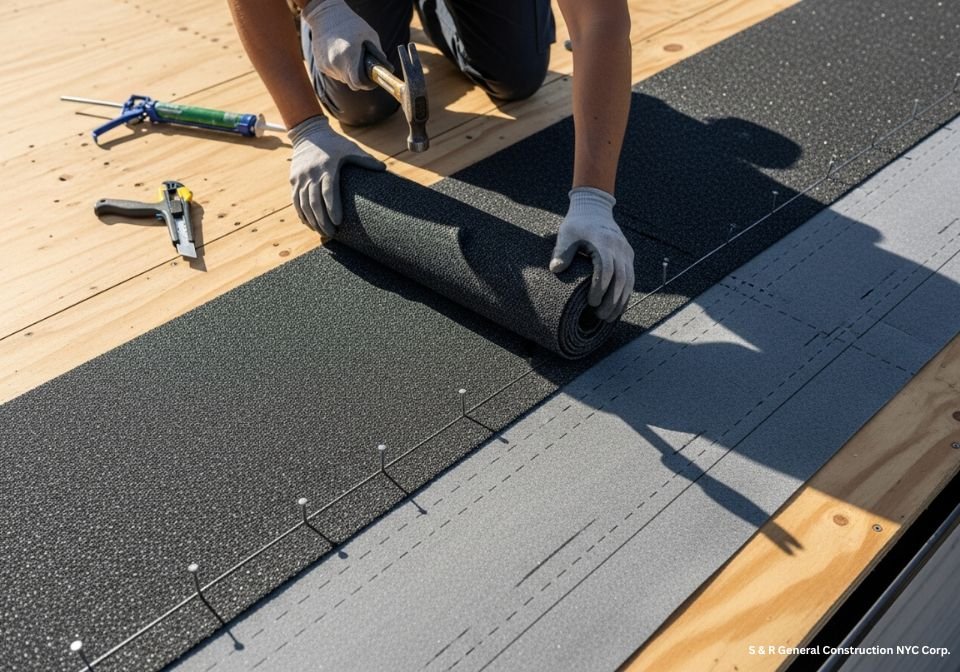
Medium budget
- Flat roofs: TPO provides a cool, reflective surface and offers good value when paired with proper insulation; typical installation guides indicate a range of $4–$14 per sq ft, depending on thickness and attachment.
- Pitched roofs: Architectural asphalt shingles last longer than 3-tab shingles and are still competitively priced for NYC homes.
- Pitched alternative: Corrugated metal (exposed-fastener steel) can cost $5–$12 per sq ft installed in many U.S. markets, with NYC often near the high end.
High budget
- Flat roofs: premium-thickness TPO or EPDM with higher-R insulation and upgraded details give long service and better energy bills.
- Pitched roofs: Metal roofing improves longevity; costs vary by system and metal type, starting well above those of shingles.
Roof Materials Pricing Factors
Intro: Brooklyn adds unique costs. Codes are strict, many blocks are situated in landmark areas, and access can be challenging. Those realities shape your final number more than the material alone.
- Permits and Compliance: Most roof replacements in NYC require DOB permits, and licensed professionals must handle the work.
- Landmark rules: Work on façades and visible roofs in historic districts may need LPC approval, which adds steps and time.
- Access and protection: sidewalk sheds or scaffolds add rentals, permits, and labor, which increase the total costs on dense streets.
- Roof type and complexity: Including flat vs. pitched, number of levels, and tricky details like parapets or skylights, changes labor hours fast.
- Material and insulation choice: Thicker TPO or EPDM, along with higher-R insulation, raises the price but improves performance and comfort.
- Tear-off and disposal: removing old layers, hauling debris, and fixing damaged decking add line items you should plan for.
Hidden Costs That Impact Your Budget
Surprise line items can push a “cheap” roof far past your plan in Brooklyn. NYC permits, protection for pedestrians, and uncovering hidden damage change totals fast. Know these early, and your quote makes more sense. The city also expects you to keep the property safe and code-compliant, which can add fees if you skip steps.
- Permits and filings. Most construction in NYC needs a DOB permit. Filing, reviews, and inspections add time and money.
- Sidewalk sheds or scaffolds. Work near the street may require a shed or a supported scaffold for public safety, as well as separate permits. Rentals and longer timelines add cost.
- Landmark approvals. Homes in historic districts often need LPC sign-off. Extra drawings and review windows affect the budget and schedule.
- Tear-off, disposal, and add-ons. Removing old layers, hauling debris, and replacing bad deck or underlayment increases the bill. Overlays miss hidden rot and water damage.
- Code-driven accessories. Flashing, ventilation, and insulation upgrades are small line items that add up but keep the roof legal and dry.
- Delays and violations. Weather-related issues, expired permits, or unpermitted work can trigger fines and additional labor. Recent Council changes aim to tighten shed timelines.
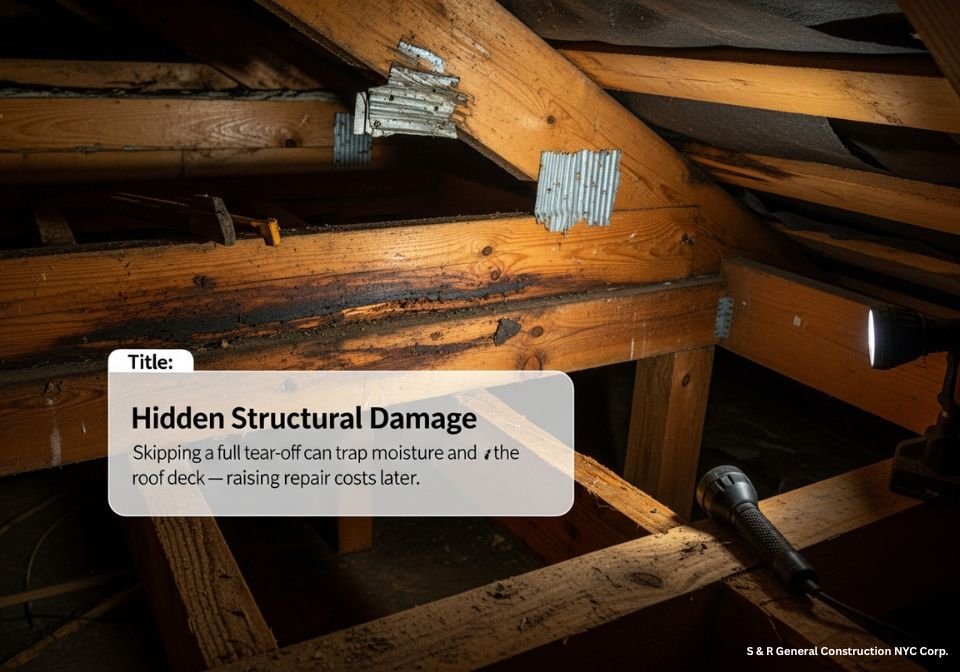
6 risks when you don’t invest in a quality roof replacement
At first, it seems natural to cut corners, but then the first storm hits. Cheap parts and repairs that were done too quickly allowed water to seep in. Moisture converts little leaks into health and repair problems. New York City also demands good maintenance; bad maintenance might lead to fines or difficulties with claims.
- Leaks and mold. Damp roofs can feed mold, which harms indoor air quality and health. Public health agencies urge quick control of moisture.
- Hidden structural damage. Skipping a full tear-off can hide rot in the deck and framing. Later fixes cost far more.
- Short roof life. Low-grade materials and weak details fail early, so you pay for another replacement sooner.
- Higher energy bills. Thin membranes or inadequate ventilation can trap or lose heat, which raises costs year-round.
- Insurance headaches. Insurers often exclude wear, tear, and neglect. Mold resulting from long-standing leaks or poor maintenance is typically not covered.
- Fines and project setbacks. Work that ignores permits or safety rules risks violations and schedule pain.

The Cost vs. Quality Matrix (What Actually Matters)
Select the right system for your roof type, not just the one with the cheapest tag. Solid installation, correct flashing at every seam, and good drainage protect you more than a fancy shingle name. Proper insulation and ventilation save money over the years, not days. NYC compliance and a real warranty keep small problems from turning into repeat jobs.
What is the Easiest DIY Roofing?
Small, easy jobs like building a shed or an outdoor cover are the safest things to do yourself. Basic asphalt shingles for a tiny pitched shed or polycarbonate panels for a light canopy are the easiest to work with. In New York City, construction of roofing usually requires permits and a licensed contractor, so it’s not possible to do it yourself on the main residence. To stay legal and safe, check the guidelines for DOB first.
Why should you choose a professional roofing contractor?
Are you looking for an expert roofing contractor in Brooklyn, NYC? SR General Construction has you covered! Our business is located at 8807 Avenue B, Brooklyn, NY 11236, United States, in the Canarsie area.
We proudly serve all areas of Brooklyn with high-quality, durable roofing solutions. From new installations to repairs and maintenance, we provide the best service at affordable prices. Contact us and experience why we’re Brooklyn’s roofing experts!
FAQ
1. What is the cheapest roofing material for a Brooklyn home?
For pitched roofs, basic asphalt shingles usually cost the least. For flat brownstone roofs, EPDM or TPO often proves the most cost-effective option when local labor costs are factored in.
2. How much do asphalt shingles cost in Brooklyn per square foot?
Typical installed prices range from $5 to $9 per square foot. That figure reflects both materials and labor.
3. What is the cheapest flat-roof system for brownstones?
EPDM is often the low-price leader, with TPO close behind. Local totals vary depending on the insulation and details.
4. How long do asphalt shingles last in NYC weather?
Expect about 20–30 years with proper installation and ventilation. Harsh winters and summer heat can shorten that span.
5. How long do EPDM and TPO roofs last?
EPDM commonly lasts about 20–30 years or more with good installation and care. TPO often lasts around 15–30 years, and thicker membranes carry longer warranties.
6. Is roll roofing a good, cheap choice for a main residence?
It is very cheap but usually lasts only about 5–8 years, sometimes up to the low teens. Most guides suggest it for sheds or short-term fixes, not occupied houses.
7. Which is more energy-friendly on a flat roof, EPDM or TPO?
TPO is white and reflects more heat, which can lower summer load. EPDM is black and absorbs heat, which can be beneficial in winter but contributes to summer heat gain.
